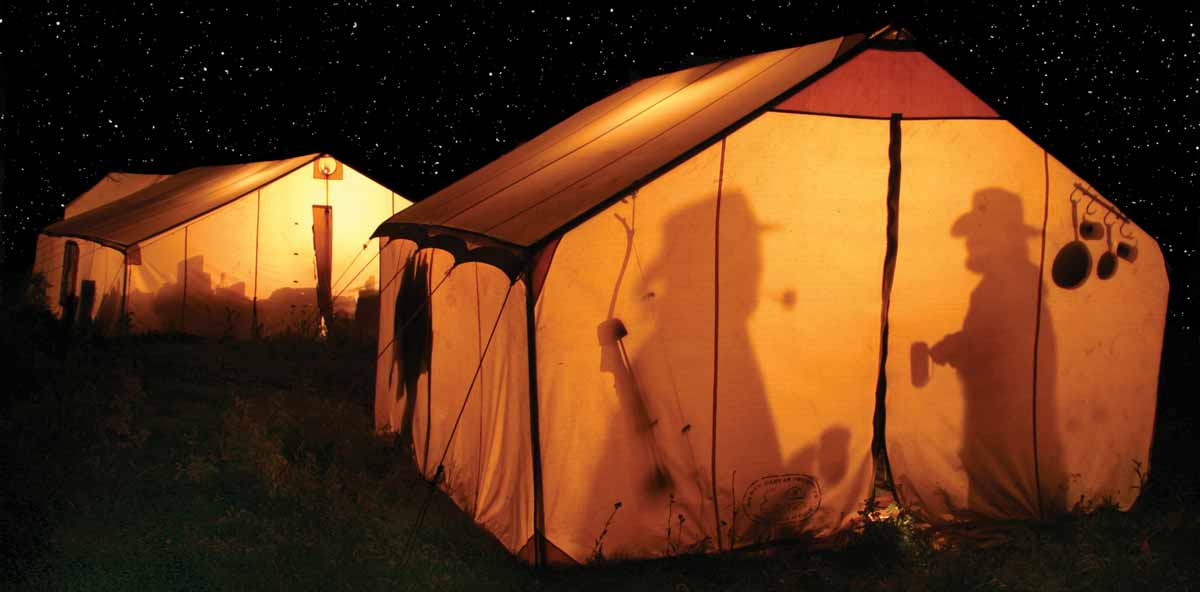Like the idea of hunting elk in the backcountry without having to sell your truck to pay for it? Try this.
You know how to hunt. You know how to cook. And you can clean and quarter and elk. What you don’t want to do is haul 300 pounds of elk meat 10 miles on your back. You’d really like that wall tent and wood stove, too. Maybe what you need is a drop camp.
Halfway between a fully-guided hunt and a do-it-yourself endeavor, drop camps vary with each individual outfit. But one thread runs through them all: there is no guide and no cook. Like the name says, they pack in your gear, drop it and leave. Then it is just you and your hunting party. Most camps accommodate two to four people for five to seven days and charge per person. Typically you can save around $2,000 per person versus a fully guided hunt.
If you want to save even more, you can just hire a packer to haul you and your gear into the sticks for backpack-style hunt. A week later he’ll come back and pack out you, your gear and whatever you killed.
But if sleeping on the ground isn’t your idea of a good hunt, a traditional drop camp will provide all the luxuries of a modern-day elk camp. Most come complete with wall tents, tables and chairs. Good drop-camps provide cooking materials, cut firewood, cots, camp tools and a water supply nearby. Make sure to get the specifics from your potential outfitter, as some outfits even include food in their price.
Outfitters will typically point out locations (either physically or using a map) that might lead to an elk encounter. Some establish a number of drop-camps scattered throughout their permitted area and will tell you of other hunting parties nearby. Outfitters will likely provide a two-way radio for emergencies and, should you kill an elk, to contact a packer to haul it out. If not, the packer should ride through camp every few days to check on you.
As with any outfitted trip, do your homework. Surf the web. Call an outfitter’s references. See how reliable they are. Ask questions like: How many drop camps will be in any given area? What’s the hunter success rate? Elevation? Weather? Exactly what will be provided and what should I bring? Is there a weight limit (for people and gear)? Make a list of questions and don’t be shy. After all, a weeklong drop camp will average around $2,000 per person, and a good outfitter should have solid, straightforward answers.
Remember, drop-camps are for the experienced elk hunter. You need to know your way around the woods, enjoy being self-sufficient, and know how to care for a dead elk. If that’s within your comfort zone, then you may well be on your way to your own personal Hilton at timberline.
